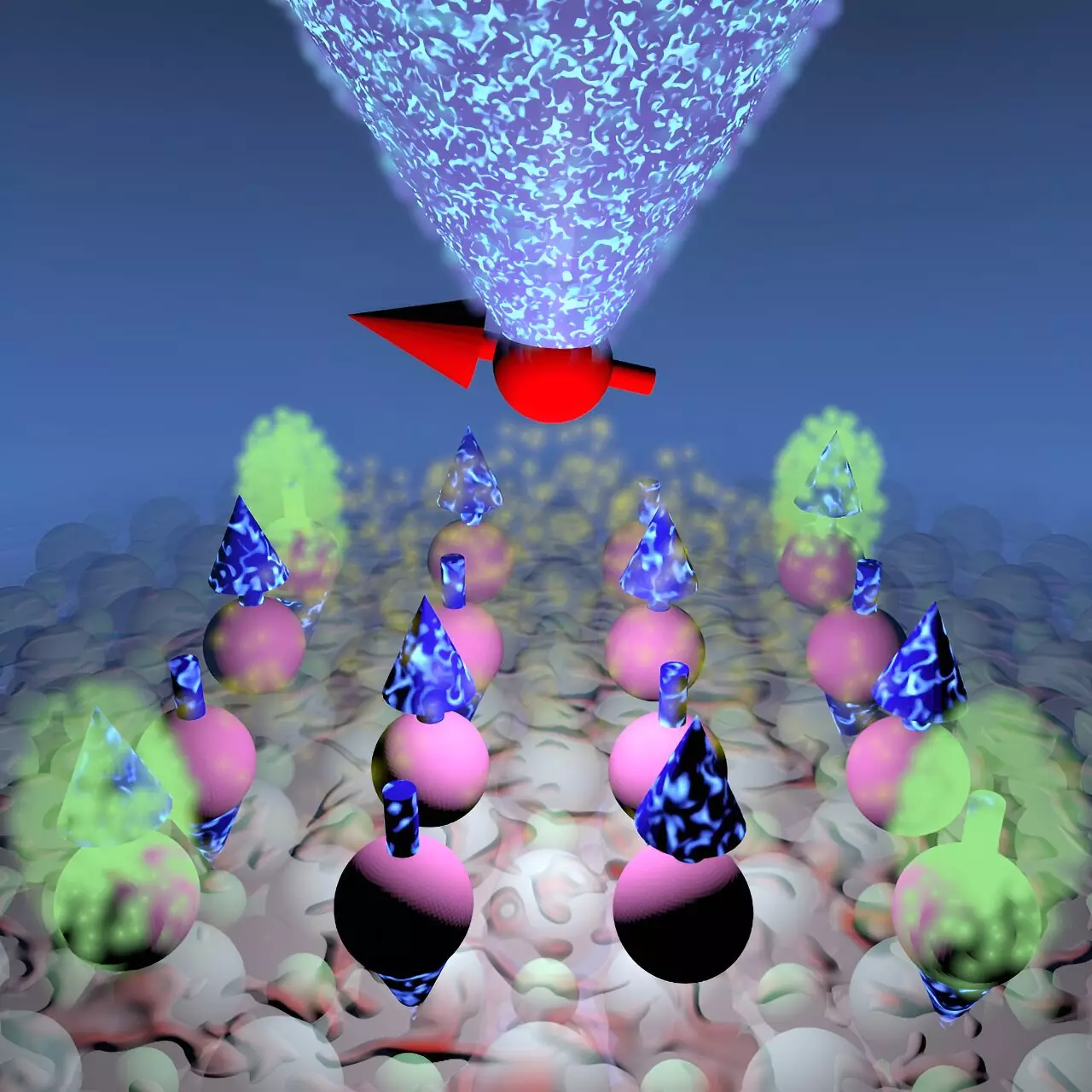In the fascinating world of quantum physics, the interaction of various quantum states leads to the emergence of unique collective states of matter. This phenomenon manifests when components such as atoms—each exhibiting quantum effects—combine, subsequently forming macroscopic quantum states. These new states often house exotic quantum excitations that, intriguingly, cannot be found in conventional materials. The insight into how these states can be engineered and manipulated bears significant implications for advancements in quantum technologies.
A recent collaboration between Aalto University and the Institute of Physics CAS showcased the innovative effort of scientists to build an artificial quantum material atom by atom. This groundbreaking project involved the meticulous placement of magnetic titanium atop a magnesium oxide substrate. The researchers didn’t simply focus on the atoms’ placement; they also concentrated on tailoring the interactions between these atoms within the material, with an aspiring vision to create a novel state of quantum matter.
This endeavor was spearheaded by José Lado, an assistant professor at Aalto University, who devised a theoretical framework for engineering a new type of material featuring properties of topological quantum magnetism. Following Lado’s theoretical groundwork, a team led by Associate Professor Kai Yang took the initiative to physically construct and evaluate the material by employing atomic-level manipulation techniques such as scanning tunneling microscopy. Their concerted efforts culminated in the successful demonstration of a higher-order topological quantum magnet—a groundbreaking discovery in the realm of quantum physics.
The conception of a higher-order topological quantum magnet heralds a promising new direction in the field of quantum technology. Unlike conventional magnets, topological quantum magnets exhibit vastly distinct properties and characteristics. The research postulates that these innovative materials could serve as a formidable tool to combat decoherence—a significant challenge in the development of stable and reliable qubits for quantum computing.
Lado emphasizes the enchanting potential of exploring topological quantum magnets, indicating that their excitations could lead to new physical phenomena that current quantum materials cannot achieve. This suggests a broader range of possibilities for scientists working with quantum matter to explore phenomena that extend beyond existing paradigms.
The intricacies of how these robust quantum excitations are manipulated provide insight into their resilience. The researchers utilized a technique that involved delicately interacting with individual atoms through a highly precise, atomically sharp metal tip. This technique effectively excited the local magnetic moments of the atoms, leading to the formation of topological excitations characterized by improved coherence.
Notably, the topological excitations demonstrated an impressive capacity to resist perturbations—one of the several hypotheses proposed in Lado’s theoretical framework. The findings indicate that the quantum coherence exhibited by these excitations surmounts that of their isolated components, further solidifying the potential utility of this artificial quantum material in countering decoherence effects.
The results of this research, published in *Nature Nanotechnology*, do more than simply advance our fundamental understanding of quantum states; they lay the groundwork towards the development of a new class of materials aimed at enhancing quantum information technologies. By exploring the properties of these innovative topological quantum magnets, the scientific community may unlock sophisticated solutions to some of the most significant barriers faced in current quantum computing applications.
As scientists continue to dissect the complexities of quantum states and their interactions, the implications of their findings promise to reshape the landscape of quantum technologies and open up a new realm of possibilities in the scientific domain. The successful demonstration of a higher-order topological quantum magnet represents not merely an academic milestone, but a harbinger of transformative advancements in how we understand and employ quantum materials in technology.


Leave a Reply